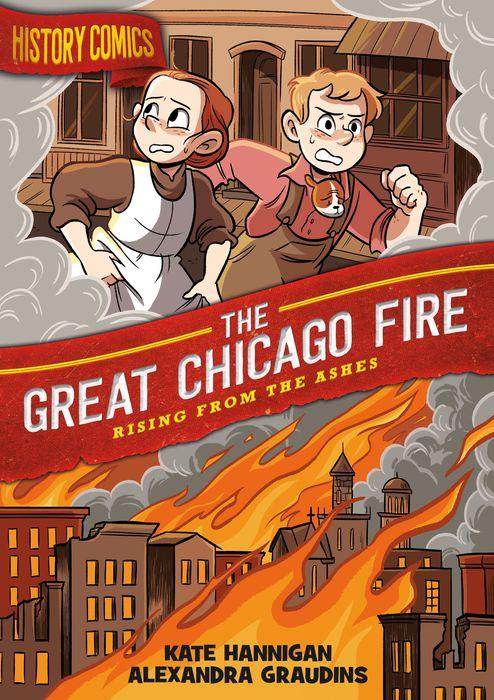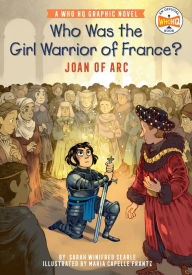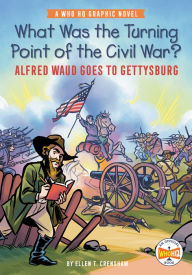Telling history and science through pictures is an obvious way to teach, but watch out when a series attempts to do more than communicate the facts.
History Comics Series, various authors, artists, and titles, published by First Second (Roaring Brook Press)

Reading Level: Middle Grades, ages 8-10
Recommended for: ages 8-12
Graphic novels are taking a larger share of children’s books publishing every year—for understandable reasons, in a culture growing less literate and more visual. “Novels” is often a misnomer, because nonfiction holds a large a place as fiction. Telling history and science through pictures is an obviously effective way to communicate the facts, and two recent graphic history series for kids attempt to do that. But watch out when a series attempts to do more than communicate the facts.

The History Comic series by First Second are colorful and beautifully produced with entertaining narratives. They take on some interesting historical sidelines, too, such as The Wild Mustang and The American Bison. I’ve read three: The National Parks: Preserving America’s Wild Places, The Great Chicago Fire, and The Roanoke Colony. Since the comics are created by a variety of writers and artists, the approach to history varies. Chicago Fire is pretty straightforward, seen through the eyes of two siblings who were neighbors of Mrs. O’Leary and later grow up to celebrate the Columbian Exposition of 1892 in a gleaming, rebuilt city.
The National Parks charts the evolution of “America’s best idea” from the 18th century through the present day. Bigfoot is our narrator and the American eagle as a character—or rather several eagles representing eras in American history with their attitudes toward land use. Many historical figures, both familiar and obscure, receive generally fair treatment, though Theodore Roosevelt comes off as a caricature. (To be fair, he asked for it sometimes.) The Roanoke Colony, an unsolved mystery, tells what’s known of the story through the perspective of two historical natives, Manteo and Wanchese. Europeans are generally seen as either silly or bloodthirsty—understandable, perhaps, from a native point of view, but not the whole story. The humor in these two treatments may make subjects more accessible to kids, but caricatures are not necessarily instructive. (One of the more recent installments is about the Stonewall Riots—I’ll bet that one’s not jokey at all.)
Overall Rating: 3.5
Who HQ Series, various authors, artists, and titles, published by Penguin Random House.

Reading Level: Middle Grades, ages 8-10
Recommended for: ages 7-10
The Who HQ Graphic Novel series are a spinoff of the popular “Who Was . . .” biographies. The graphics are written for a slightly younger audience than History Comics and usually focus on one event or in a character’s life or in a larger historical period, such as What Was the Turning Point of the Civil War? (Gettysburg). I also read Who Was the Voice of the People? (Caesar Chavez) and Who Was the Girl Warrior of France? (Joan of Arc).

The format is brief introduction, summary panels of the backstory, and scattered sidebar pages that present more background or interesting tangents. I half-expected the Chavez biography to take a Socialize tone and the Gettysburg book to dump all over Lee and Longstreet, but all three titles were instructive and respectful of their subjects without snark or snide—though I can’t vouch for the whole series.
Overall Rating: 4
A word about the popular “Who Was? Show” on Netflix: each episode explores two contrasting characters from different periods of history (Ben Franklin/Gandhi, Louis Armstrong/Marie Antoinette, Isaac Newton/Amelia Earnhardt, etc.) These are entertaining and kids will learn something from them, but they’re too goofy for my taste. A dash of humor is fine; humans do have their comic side. But poking fun at our ancestors, or pointing judgmental fingers at them, can create a sense of superiority in people who are too young to understand the nuances, or too willfully blind to care about them.
Read more about our ratings here.
Also at Redeemed Reader
- Reviews: Nathan Hale’s Dangerous Tales generally strikes a good balance between humor and respect. See our reviews of Treaties, Trenches, Mud and Blood, and Major Impossible.
- Resource: Betsy recommends some Great History Authors for Kids.
We are participants in the Amazon LLC affiliate program; purchases you make through affiliate links like the one below may earn us a commission. Read more here.
Support our writers and help keep Redeemed Reader ad-free by joining the Redeemed Reader Fellowship.
Stay Up to Date!
Get the information you need to make wise choices about books for your children and teens.
Our weekly newsletter includes our latest reviews, related links from around the web, a featured book list, book trivia, and more. We never sell your information. You may unsubscribe at any time.
We'd love to hear from you!
Our comments are now limited to our members (both Silver and Golden Key). Members, you just need to log in with your normal log-in credentials!
Not a member yet? You can join the Silver Key ($2.99/month) for a free 2-week trial. Cancel at any time. Find out more about membership here.

